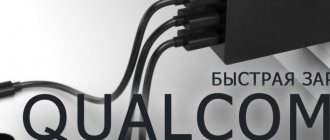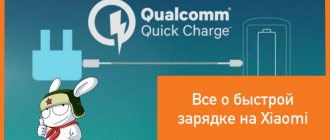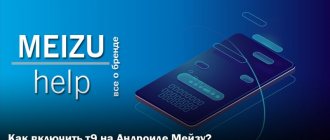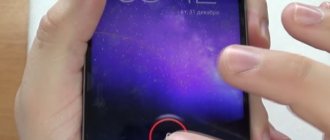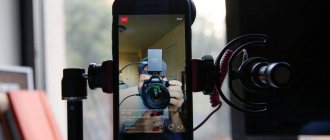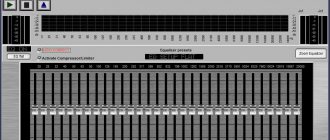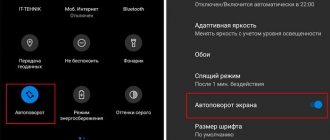Fast charging on Honor/Huawei is an opportunity to save your own time without losing the ability to use your phone. At the same time, gadget owners should take into account that this method of replenishing the battery has certain limitations that must be taken into account.
Those people who are afraid to use the mentioned function, fearing a future breakdown of the smartphone, should not worry, since accelerated charging is safe and does not pose any threats. To be convinced of what has been said, it is enough to find out what it is and understand how to use the option. Moreover, the developers did not propose anything revolutionary, deciding to use all the capabilities of mobile technology, and not just some, as is usually the case.
What is fast charging
Huawei fast charging may be called "Super Charge" or "Quick Charge". The principle of operation is almost the same as that of conventional charging, only the battery energy is replenished many times faster due to high power.
Fast charging (QC) works as follows:
- A powerful charger supplies current to the battery many times faster.
- The battery charges up to 50 percent quickly. But having passed this mark, current begins to flow into the battery more slowly. After 80 percent of the charge, current flows as usual without using Quick Charge. This measured supply of energy to the battery is possible thanks to special built-in sensors.
The principle of accelerated charging on Huawei is simple. You connect the device to a power outlet, and the battery charge begins to actively replenish.
Acoustics and battery life
Honor 7 does not disappoint in terms of acoustics, but still the sound on both the mobile and landline side could have been better: minimal noise on the line and the creaky voice of the interlocutor cost the device several rating points in this test discipline.
The battery life of Honor 7 is more than 11 hours in telephone mode, which is at the top level. In online surfing mode, the 3100 mAh battery runs out in less than 6 hours - not the most outstanding value. However, you can be pleased with the charging speed - this process will only take 2 hours.
Is fast charging harmful for phones?
This technology practically does not harm the battery of a mobile phone. Such chargers can cause serious damage to the battery only if increased current is supplied throughout the entire charge cycle.
The technology for restoring battery capacity at an accelerated pace is programmed in such a way that when the battery reaches 70% charge, charging is transferred to normal operation.
The negative impact on the battery is not the use of this type of technology, but the frequent and incomplete restoration of the battery capacity. The battery is designed for a limited number of charge/discharge cycles, so if the gadget is connected to the adapter several times a day, then, naturally, the entire battery life will be used up within 1 year.
To prevent the battery from wearing out very quickly when using fast charging, it is recommended that after connecting the adapter, charge the battery to 100% or, better yet, 90-95%. In addition, it is not advisable to completely discharge the battery.
The charger should be connected when the charge level drops to 15 - 20%. Daily application of these simple rules will significantly increase the effective life of the battery when using wireless charging or in the fast capacity recovery mode.
Do you have any questions or something to add to the article? Then write to us about it in the comments. This will help make the material more complete and useful!
Huawei's flagships, presented in the spring of 2020, are impressive. Thus, the youngest in the series is the Huawei P20 Lite smartphone - according to the name, a slightly “stripped-down” version of the older flagship. The price for the “light” version of an advanced smartphone is two times lower than for a phone with the “Pro” prefix.
Disable your SIM card.
The influence of the operator on battery life is significant: you can save significant battery life simply by choosing the first network.
While this may seem like a big step, the Honor 7 gives you the option to disable one or both of your SIM cards, cutting off your network access completely. Of course, this will mean that you can't make calls or use mobile data, but it's a very effective solution to boost your battery life. Go to Settings > Dual Card Management to disable them.
Disabling one or both SIM cards in Honor 7 can save battery power. / © ANDROIDPIT
Time is money: we continue to understand fast charging standards
In the first part of the article, we talked about the most common fast charging standards - Quick Charge and USB Power Delivery. In this part we will look at all other standards that can be considered fast charging. Apple Traditionally, all iPhones have been equipped with 1 A and 5 V chargers for the past 10 years - but, of course, this does not mean that they cannot be charged faster. Starting with the iPhone 6, users began to notice that if they use a 12 W iPad charger, the smartphone begins to charge faster: yes, it does not take a maximum current of 2.4 A, but 1.5-2 A is also not bad, which allows you to charge the iPhone much faster . Moreover, it turned out that Plus versions are charged with higher currents than regular ones.
More about Huawei: Managing home screen icons; How to remove an application icon; How to manage folders on your home screen | HUAWEI support Russia
But it was still quite slow - if competitors offered to charge the battery by 50-60% in half an hour, then it was hardly possible to charge 20-30%. And only last year Apple finally decided to use fast charging using the Power Delivery (PD) standard.
To do this, you will need an original Lightning to USB-C cable, a power adapter with PD support (Apple recommends its own, 29-87 W, but does not prohibit the use of third-party ones) and an iPhone 8 or later. Having fulfilled all the requirements, you will receive a 50% charge in half an hour: yes, this is somewhat less than that of competitors, but still seriously faster than charging through the power adapter from the iPad, and many times faster than charging from the included 5-watt charger.
Of course, the question arises - what third-party adapters can be used? The answer is simple - those that are PD compatible. If you use adapters without its support - for example, with Quick Charge 3 - options are possible: in the worst case, you will get “standard” 1 A and 5 V, in the best case, there will be something similar to charging through an iPad adapter: the current will fluctuate from 1 to 2 A.
Huawei Fast Charge Protocol (FCP), Samsung Advanced Fast Charging and Motorola Turbo Power
I combined these technologies together for a reason, because in essence they are clones of QC 2.0. And if the creation of FCP can still be understood - after all, Huawei has its own Kirin processors, so the technology had to be changed, but Samsung and Motorola mainly use Qualcomm processors, so in essence their fast charging technologies are a simple rebranding.
These standards are compatible with QC 2.0 (except for FCP - but even there the adapters could often have protocol support from Qualcomm), that is, they are also compatible with each other. The maximum charging capacity from Motorola is up to 25 W, and as for the capacity gained, each manufacturer had their own say: for example, the Moto X Force (3760 mAh) should be charged to 80% in 45 minutes.
Mediatek Pump Express
At first I wanted to add this technology to the previous paragraph, because in essence it is also a QC clone. But unlike technologies like Samsung Advanced Fast Charging, which did not have a continuation, PE has three versions:
As you can see, the first two are a complete repetition of QC standards. Moreover, the same LeEco produced chargers that were compatible with both QC and PE.
The differences begin with PE 3.0 - if Qualcomm in QC 4.0 continues to use small currents (1-2 A) with high voltages (up to 20 V), then Mediatek decides to go the other way: the voltage ranges from 3 to 6 V, but the current can be greater than 5 A. Considering that most cables are rated at 3 A, PE 3.0 requires a special cable.
As for the supported chipsets, this is most of Mediatek Helio (funny, but the company does not disclose the full list) - for example, Meizu Pro 6 on Helio X25 with a 2560 mAh battery is fully charged using PE in just an hour.
As for backward compatibility, it’s officially... not there. True, Mediatek says that the PE 2.0 and 3.0 standards can work in parallel and be installed in devices together according to the manufacturer’s requirements. OPPO VOOC and OnePlus DASH Charge Essentially, OPPO and Vivo belong to the same concern BBK Electronics, so the difference between these technologies is only name.
VOOC first appeared in the Oppo Find 7 smartphone in 2021, and subsequently began to be used in various devices of the F, R and N series. As for OnePlus, the first smartphone to support DASH-VOOC is 1 3, and later this technology was used in every new OnePlus smartphone.
What makes it special? Like Mediatek, OnePlus decided to go the route of increasing current rather than voltage, ending up with the same 20W output as QC 3.0 in a different way - using 4A and 5V. Overheating, you say? Everything is taken into account, says 1: two cans are simultaneously charged with lower currents to reduce overheating. Moreover, part of the charging circuit is located in the power adapter to further reduce heating.
What did this lead to? That's right, if you want to use DASH, use only the included charger with the included wire. Are you saying Snapdragon supports QC? But not in the case of 1: using third-party adapters you will get no more than 1.5 A and 5 V. That is, instead of going towards standardization, it invents its own standard, incompatible with anything else.
More about Huawei: How to connect Honor and Huawei to a computer via USB and Wi-Fi: connection instructions without HiSuite and using the program
What about charge speed? It is at the level of new QC, about 60% in 35 minutes. But at the same time, as I wrote above, you are “tied” to DASH, so whether it’s worth it is up to you to decide.
Huawei SuperCharge
If adapters with Huawei FCP were often compatible with QC 2.0, now the company has created a completely new fast charging format that is no longer compatible with any other. As for the characteristics, the standard is quite similar to DASH, here it is 5 A at 4.
But still, as much as 22.5 W makes this charging the leader in speed, which somewhat smooths out the disadvantages: for example, with its help, the battery of the Huawei Honor 10 smartphone with a capacity of 3400 mAh was fully charged in 73 minutes - an impressive result.
Meizu Super mCharge
At MWC 2021, Meizu managed to surprise by introducing really fast charging: with its help you can charge a 3000 mAh battery by 60% in 10 minutes, and fully in just 20!
All this is achieved thanks to a simply unprecedented power of 55 W - 2.5 times more than DASH and SuperCharge. It turns out thanks to a current of 5 A and a voltage of 11 V - yes, I think there is no need to say that a special cable and charging are required.
Alas, although the technology is extremely interesting, it has not yet entered the market, although more than a year has passed since the announcement.
Conclusion
As a result, as you can see, almost every more or less large smartphone manufacturer decided to release their own fast charging, often incompatible with competitors’ solutions. Of course, I can’t call this a good solution - the good news is that more and more large manufacturers, such as Apple and Qualcomm, are moving to one common Power Delivery standard, so let’s hope that others will follow suit.
Design and ergonomics of Honor 9 Lite
The most subjective part of the review is, as always, the design. It is very difficult to balance between different tastes. Therefore, I will try to be objective. I can’t say that I’m a fan of metal or glass cases, both materials have their pros and cons. Therefore, we must proceed from the general. If it looks nice and is practical for everyday use, both options have a right to exist.
And when there is a choice, you and I only benefit from this. Agree, Honor already has a solid metal 7X, it’s not worth repeating. Moreover, you need to maintain the ideology of the line. Despite the Lite prefix, Honor 9 inherited the general features of the body from Honor 8, and not from 9. Since the latter is more similar to Xiaomi M6 or vice versa, rather than a successor of the eighth model.
Rectangular body with rounded oval corners, tempered glass panels on both front and back with a slight convex effect to add elegance to the design. After a little over a week of use, no scratches were found. Both panels received a good olephobic coating; there will be no problems with grease marks. It's a pity that the company decided to completely abandon metal; the frame is made of plastic. Yes, this option feels cheap, especially when you hold it in your hand.
And Honor deserves our reproach. After all, metal alloys are not very expensive these days. But honestly, with daily contact you forget about this plastic part, especially if you use a case.
There is a dual camera on the back, and this is an important clarification, since there are four of them, and it hardly protrudes above the body, and does not look as ridiculous as it is done in the 7X. And the last most important part of the design element is on the front panel, I’m now talking about both the display and the frames around it. Pay attention to the neat, identical indents both above and below, and on the left and right. They are not super small, they are not frameless, but they look, to me, very aesthetically pleasing.
How good is the display?
You don't need more from a budget smartphone. The display itself received an IPS matrix with a non-standard diagonal of 5.65 inches. Full HD - resolution 2160 by 1080 pixels and with a variable aspect ratio standard of 18 by 9. This is a good quality screen, but not the best for this segment. The picture is smooth, the colors are saturated, although dull and white-dirty. And if you compare head-to-head with the same Redmi5+, then 9 Lite is noticeably inferior in all respects. Both in color rendition and brightness range. In Honor it is not very wide and you especially notice it at night.
However, the screen is still well calibrated and does not go into a warm or cool tone. And if suddenly you need to adjust the color temperature, the settings have both a standard preset and a very precise manual mode. The images are nice, the application either supports 2:1 aspect ratios, or the systems are adjusted automatically, or, if we are talking about video, it is scaled and cropped. It's good? Obviously not, but there are no other options.
The display supports multi-touch for 10 touches, double tap unlocking, and also has a night mode function for your eyes, it is large and this option usually has both advantages, more information can be placed, and disadvantages: increased dimensions and all that. Honor 9L can argue with this disadvantage, because it fits perfectly in your hand, does not slip or dig into your palm, its width allows you to use the smartphone in some situations with one hand and does not even cause any particular discomfort.
In addition, the system provides a mini window function, that is, a software reduction of the display diagonal, which helps to operate with one hand. Above the screen you can see two eyes for the front cameras, a multi-colored notification indicator and a metal grille on the earpiece. Even for $200, the user did not deserve USB; the body has our old friend micro USB, but it is worth paying tribute to the thoughtful ergonomics; the headphone jack is located on the bottom edge.
Thus, all the necessary entrances and exits are located here. There is also a second microphone on the rear panel for noise reduction. If we talk about the design, I personally liked it - a strict, symmetrical rectangular block. At the same time, glass panels and multi-colored body options, gray, black, blue, white, gave it the youthful effect that the brand strives for. In general, I think they hit the target audience. Great, having sorted out the clothes, I’ll move on to the head part.
The brains have migrated straight from the 7X and from a performance point of view, obviously, there are no changes in the 9. The computing part is performed by the not too old, but not the latest Kirin 659 processor, consisting of two blocks of 4 Cortex A53 cores. One unit operates at a frequency of 1.7 Hz, and the second produces a maximum value of 2.36 Hz. Depending on the task being performed, they complement each other. There are two versions with three or four gigabytes of RAM and thirty-two or 64 GB, respectively, of built-in storage.
Huawei processors are always equipped with high-speed modems. The main thing to remember is that there is a version for Asia and for Europe; if you buy on AliExpress now, in January 2021, you doom yourself to the fact that you will not be able to support the main 4G frequencies. Since the Chinese Honor 9 Lite does not have the B7 and B20 bands, only the European model can boast of them, be careful.
How to enable fast charging on your phone
To enable or disable knowledge on a device, you do not need to perform any specific actions. But the default functionality does not work on all phones. If you find yourself in this situation, follow these steps:
- Open settings on your Huawei smartphone.
- Find the “Battery” section (in some devices it may be called differently).
- In the menu, select the item called “Fast charging”, and move the slider, on the contrary, to the active position.
To make sure that supercharge is activated and working, simply put your smartphone on charge and note the time. It should be significantly reduced.
Myths about battery charging
Myth No. 1 . Don't leave your phone charging overnight.
The rule is relevant for outdated models. A mobile phone plugged into the network for a long period of time overheated and could break. This does not happen to modern phones. Once the battery is fully charged, the smartphone automatically turns off and stops energy accumulation.
Myth No. 2 . Charge only a completely discharged phone.
Old, nickel-containing batteries, which exhibited the so-called “memory effect,” quickly became unusable if charged at random times. New generation smartphones use lithium batteries, they can be charged whenever.
Myth No. 3 . Fast charging is harmful to your phone
The modern fast pace of life does not leave time for users to fully charge their smartphone. In order to avoid short-term and frequent connections to the network, QuickCharge technology was invented. The capacity of lithium polymer batteries tends to decrease after a certain number of charge repetitions. Therefore, it is better to charge once and quickly than to constantly yank the battery into the outlet.
Myth No. 4. Completely drain the battery of a new phone
And several times too. For the new generation of lithium batteries, this rule also does not apply. The reason is still the same, the difference in generations and battery production technologies.
How to disable fast charging
If for some reason you need to disable quickcharge on your smartphone, you can do this as follows:
- Open the Settings section on your phone.
- In the “Maintenance” item, select the battery icon.
- Select the item where settings for the battery are made.
- In this menu we find the “Fast charging” item, drag the slider to the inactive state.
After these steps, the battery will charge as usual. You can activate the BZ at any time.
Identify power-hungry applications.
The Protected Apps section, again found in Settings > Power Saver, allows you to identify any battery-hogging apps lurking on your phone. Just tap Power-hungry apps to see what they are.
Many apps consume too much power even when the phone is in standby mode because “push data” is received in the background. Once you have identified which apps are at fault, simply turn off the switch to stop background activity.
Tap the power-hungry apps button to see which apps use the most power. / © ANDROIDPIT
How to properly charge your smartphone
However, Huawei's smart charging mode will have another function besides slowing down. Judging by the description, it will allow, in principle, to block the energy supply when the battery reaches 80%. This is a cool idea that the Chinese probably picked up from Tesla.
Elon Musk has repeatedly said that charging any battery to 80% on a regular basis has less negative impact on it than if it were charged to 100%. That is why the Tesla app has a special function that allows you to set a limit after which charging will automatically stop.
Everything you need to know about Huawei Pay in Russia
Charging rules for Honor and Huawei smartphones
Let's look at how to properly charge Honor and Huawei so that the device can function for as long as possible.
How to charge a new phone
If you have a new device from Huawei, then contrary to popular belief, you should not wait until it is completely discharged. New devices require downloading updates and installing applications. Therefore, as soon as the device is removed from the box, it is recommended to connect it to the network and wait until the charge indicator reaches 100%. After this, you can install updates, download games and applications.
Everyday exercise
All subsequent charging of Huawei phones and tablets can be carried out at your convenience. It is recommended not to wait until the device is completely discharged and when the battery level is 10-15% , connect it to the network.
Battery calibration
Due to frequent loads and the fact that the smartphone is constantly turned on, the battery capacity may decrease. Calibration will help fix this. This process consists of the following steps:
- Completely discharge the battery to 0%.
- Connect the switched off smartphone to the network (it is recommended to use the original power adapter).
- Wait until it is fully charged to 100%.
- Enable and use.
It is recommended to carry out calibration every 1.5-2 months.
What phones support bz
Huawei is constantly updating its line of smartphones. There is no point in listing all the models that have the Super Charge function, since there are many of them.
But if you decide to buy an outdated Huawei model or buy a device second-hand, then most likely there will be no knowledge base support.
The technology appeared relatively recently. But almost any new smartphone priced above the average price category will have this nice option. Before buying a smartphone, make sure that it has the necessary functionality. If you have already bought a phone and want to make sure whether this technology is present in it, you can find information about this on the box or in the model description on the Internet.
Honor 7 camera test
Camera: high resolution, excellent detail, but incorrect color reproduction
The main camera has a resolution of 20 megapixels and a dual LED flash. The front camera can offer 8 megapixels and backlighting with one LED. Photos taken with the main camera look sharp and highly detailed, but color reproduction is the device's weak point.
In addition, photo processing software interferes with the process too much, further emphasizing the contours of the images. However, we liked the many opportunities to play around with the camera, thanks to the filters and effects that the corresponding app has to enhance your photos.
Characteristics and test results of Honor 7
| Price-quality ratio | 63 |
| OS during testing | Android 5.0 with EMUI 3.1 |
| Current OS | Android 6.0 |
| Is there an OS update planned? | no data |
| App Store | |
| Weight | 162 g. |
| Length x Width | 143 x 73 mm; |
| Thickness | 10.0 mm; |
| Expert design review | Fine |
| Expert assessment of work speed | satisfactorily |
| Download speed: PDF 800 KB via WLAN | 6.1 s |
| Download speed: main chip.de via WLAN | 0.6 s |
| Download speed: chip.de test chart via WLAN | 13.3 s |
| Sound quality (speakerphone) | Fine |
| CPU | HiSilicon Kirin 935 |
| Processor architecture | |
| CPU frequency | 2.200 MHz |
| Number of CPU cores | 4+4 |
| RAM capacity | 3.0 GB |
| Battery: capacity | 3.100 mAh |
| Battery: easy to remove | — |
| Battery: surfing time | 7:10 h:min |
| Battery: charging time | 2:14 h:min |
| Fast charging function | — |
| Charger and fast charging cable included | |
| Battery: discharging time/charging time | 3,2 |
| Wireless charging function | — |
| WLAN | 802.11n, ac |
| Voice over LTE | |
| LTE: frequencies | 800, 1.800, 2.600 MHz |
| LTE: Cat. 4 | up to 150 Mbit/s |
| LTE: Cat. 6 | up to 300 Mbit/s |
| LTE: Cat. 9 | — |
| LTE: Cat. 12 | — |
| Screen: type | LCD |
| Screen: diagonal | 5.2 inches |
| Screen: size in mm | 65 x 115 mm; |
| Screen: resolution | 1.080 x 1.920 pixels |
| Screen: Dot Density | 423 ppi |
| Screen: max. brightness in a dark room | 421.9 cd/m² |
| Screen: staggered contrast in a bright room | 51 :1 |
| Screen: staggered contrast in a dark room | 122 :1 |
| Camera: resolution | 20.0 megapixels |
| Camera: measured resolution | 2,429 line pairs |
| Camera: expert assessment of image quality | Fine |
| Camera: VN1 noise | 3.5 VN1 |
| Camera: minimum focal length | 4.6 mm; |
| Camera: minimum shooting distance | 7 cm; |
| Camera: Shutter Time with Autofocus | 0.70 s |
| Camera: optical stabilizer | — |
| Camera: autofocus | Yes |
| Camera: flash | Double LED |
| Video resolution | 1.920 x 1.080 pixels |
| Front camera: resolution | 8.0 megapixels |
| LED indicator | yes (multicolor) |
| Radio | Yes |
| SIM card type | Nano-SIM |
| Dual SIM | Yes |
| Protection against dust and moisture (IP certificate) | — |
| Fingerprint's scanner | |
| User accessible memory | 9.1 GB |
| Memory card slot | Yes |
| USB connector | micro-USB 2.0 |
| Bluetooth | 4.1 |
| NFC | — |
| Headphone output | 3.5 mm; |
| HD Voice | Yes |
| SAR | 1.13 W/kg |
| Firmware version during testing | PLK-L01C432B100 |
| Test date | 2016-07-27 |
Important aspects when charging the battery
If it so happens that the battery of the Honor 10 smartphone has failed, then when choosing a new battery, the user needs to pay attention to the current and voltage values that are in the instructions for the phone. These indicators can also be found on the battery itself.
If you charge your smartphone using a charger with a lower voltage and current, then the phone, of course, will not break, but you will not be able to fully charge the device.
If you charge the phone using a charger, on the contrary, with a high current and voltage, then the device will also not break, but there may be unpleasant consequences in the future. As a rule, the battery expires earlier.
In addition, it is important not to buy cheap memory devices from unknown manufacturers, since the values may be unstable. No one knows how a smartphone will react to such a charger.
Why you need to protect your battery
Most users always strive to take care of their belongings. Smartphones are no exception. But usually owners think about the battery life when the battery charge is rapidly moving towards zero, that is, only for a short period, and not for the future, which is wrong.
It is important to treat the battery with care, then it will last as long as possible. There are ways to maintain excellent battery performance over a long period of time. But it should be remembered that each battery has a service life, after which the battery fails and needs to be replaced.
As a rule, developers claim that batteries last from 300 to 500 discharge-charge cycles. After many cycles, the battery will no longer be able to work as efficiently as it did at first, since much less electricity is being stored.
Battery memory effect
Many people are wondering whether it is worth waiting until the battery is completely discharged to charge it to 100%? Or is this a myth that users themselves came up with when they heard about the term battery memory effect?
The battery memory effect means that the battery “remembers” the percentage of battery charge if this is repeated regularly, and also if in previous cycles the battery capacity was not fully used. Simply put, if you regularly charge the battery not completely, but, for example, from 25% to 75%, then it (the battery) can forget about 50% of its capacity, which is not charged (from 0 to 25%, from 75% to 100% ). Such information sometimes looks strange, but there are facts in it, but they only concern outdated nickel batteries. This information has nothing to do with lithium-ion batteries.
Lithium-ion batteries do not have a memory effect, so they need to be charged in a completely different way: charge regularly, but do not completely discharge and charge.
